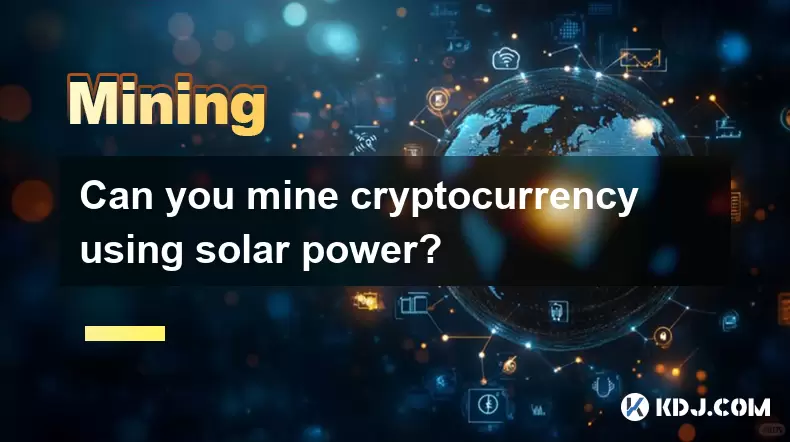-
 Bitcoin
Bitcoin $115100
1.27% -
 Ethereum
Ethereum $3675
2.71% -
 XRP
XRP $2.995
1.45% -
 Tether USDt
Tether USDt $1.000
0.02% -
 BNB
BNB $769.8
2.64% -
 Solana
Solana $168.0
3.25% -
 USDC
USDC $0.9999
-0.01% -
 TRON
TRON $0.3371
1.48% -
 Dogecoin
Dogecoin $0.2051
3.36% -
 Cardano
Cardano $0.7394
2.30% -
 Hyperliquid
Hyperliquid $38.15
0.42% -
 Stellar
Stellar $0.3966
-0.36% -
 Sui
Sui $3.486
2.93% -
 Chainlink
Chainlink $16.72
2.52% -
 Bitcoin Cash
Bitcoin Cash $568.0
4.36% -
 Hedera
Hedera $0.2440
2.59% -
 Ethena USDe
Ethena USDe $1.001
0.04% -
 Avalanche
Avalanche $22.16
2.06% -
 Litecoin
Litecoin $119.1
-0.73% -
 UNUS SED LEO
UNUS SED LEO $8.991
0.04% -
 Toncoin
Toncoin $3.232
-0.39% -
 Shiba Inu
Shiba Inu $0.00001233
2.82% -
 Uniswap
Uniswap $9.717
2.53% -
 Polkadot
Polkadot $3.664
1.85% -
 Dai
Dai $1.000
0.01% -
 Monero
Monero $281.2
-3.89% -
 Bitget Token
Bitget Token $4.350
1.55% -
 Cronos
Cronos $0.1428
5.07% -
 Pepe
Pepe $0.00001050
3.68% -
 Aave
Aave $262.3
3.54%
How to optimize the graphics card driver for graphics card mining?
Optimizing your GPU driver for mining involves finding the optimal version for your hardware and algorithm, often requiring experimentation. Proper installation, troubleshooting potential issues, and considering alternative drivers are crucial for maximizing hashrate and profitability.
Mar 21, 2025 at 09:14 pm

Key Points:
- Understanding the relationship between graphics card drivers and mining efficiency.
- Identifying the optimal driver version for your specific GPU and mining algorithm.
- Steps to install and configure the optimal driver for maximum hashrate.
- Troubleshooting common driver-related issues affecting mining performance.
- Exploring alternative driver options and their potential benefits.
How to Optimize the Graphics Card Driver for Graphics Card Mining?
Graphics card drivers are the crucial software that allows your operating system to communicate with your GPU. Optimizing these drivers is essential for maximizing your mining profitability. The wrong driver version, or a poorly configured one, can significantly reduce your hashrate and overall efficiency. Choosing the right driver involves understanding your hardware and the specific cryptocurrency you're mining.
The first step is identifying your GPU model. This information is usually found on the GPU itself or within your system's device manager. Once you know your GPU model, you need to determine which cryptocurrency you plan to mine. Different algorithms (like Ethash, Equihash, etc.) have varying levels of compatibility with different driver versions. Some algorithms might perform better on older drivers, while others might benefit from the latest releases.
Finding the optimal driver often involves experimentation. The manufacturer's website (Nvidia or AMD) is the best place to start. Look for drivers specifically designed for mining or those released around the time your GPU was most efficient for the algorithm you're using. Community forums and mining guides are also valuable resources. They often contain discussions about which drivers provide the best performance for particular GPUs and algorithms.
Once you've identified a potential optimal driver, the installation process is relatively straightforward. Download the driver from the manufacturer's website. Uninstall your current driver completely before installing the new one, using the provided uninstaller. Reboot your system after installation to ensure the changes take effect. After installation, monitor your hashrate closely. You may need to experiment with different driver versions to find the one that yields the highest hashrate for your setup.
Sometimes, even with the optimal driver, you might encounter issues. These could manifest as lower-than-expected hashrates, crashes, or errors. Common causes include driver conflicts, outdated operating systems, or insufficient power supply. Troubleshooting involves checking your system's stability, ensuring adequate power, and potentially reverting to an older driver version if problems persist. Monitoring your GPU temperature and fan speed is also crucial to prevent overheating and potential damage.
Beyond the standard drivers provided by manufacturers, some specialized mining software or operating systems offer optimized driver packages. These packages often include tweaks and configurations designed to enhance mining performance. However, proceed with caution when using third-party drivers, as they might not be as stable or secure as the official versions. Always research thoroughly before installing such drivers. Consider the trade-off between potential performance gains and the increased risk of instability.
Optimizing your BIOS settings can also complement driver optimization. Adjusting settings like power limits and core clocks can improve hashrate, but be cautious, as incorrect settings can damage your GPU. This requires a good understanding of your hardware's capabilities and limitations. Incorrect adjustments could lead to instability or even hardware failure. Consult guides and resources specific to your GPU model for safe BIOS tweaking.
The impact of the operating system itself should not be overlooked. Some operating systems are better suited for mining than others. For example, some miners prefer Linux-based systems for their stability and efficiency. Choosing the right OS, along with the right drivers, contributes to the overall optimization process. This choice can be significant, especially when dealing with large mining operations. Consider the resource demands and stability provided by various operating systems.
Maintaining your drivers is an ongoing process. Regularly check for driver updates from the manufacturer's website. While newer drivers often include bug fixes and performance improvements, they might not always be beneficial for mining. Always monitor your hashrate after any driver update to ensure it hasn't negatively impacted your performance. Keep your system updated, but be cautious about blindly adopting the newest releases.
Proper cooling is paramount. Overheating is a significant cause of mining problems and can lead to GPU damage. Ensure adequate airflow around your graphics cards. Consider using additional fans or investing in a liquid cooling system, especially when mining with multiple GPUs. Regular cleaning of dust and debris from your system is also vital for optimal thermal performance. Neglecting this can severely reduce your mining efficiency and shorten the lifespan of your hardware.
Choosing the right power supply is equally important. Underpowered supplies can lead to instability and reduced performance. Make sure your power supply has sufficient wattage to handle the power demands of your GPUs, especially under load. A quality power supply is crucial for maintaining the stability of your mining rig and preventing damage to your hardware. Always ensure your power supply is rated for the total power consumption of your entire mining setup.
Frequently Asked Questions:
Q: Will installing the latest driver always improve my mining performance? A: No, sometimes older drivers offer better compatibility and hashrate for certain algorithms and GPUs. Experimentation is key.
Q: My hashrate dropped after installing a new driver. What should I do? A: Try reverting to the previous driver version. Check for driver conflicts, system stability issues, and ensure adequate power supply.
Q: Are there any risks associated with using third-party drivers? A: Yes, they may be less stable or secure than official drivers. Proceed with caution and research thoroughly.
Q: How often should I check for driver updates? A: Regularly check, but don't blindly update. Monitor your hashrate after any update to ensure no negative impact.
Q: What is the role of BIOS settings in graphics card mining? A: BIOS settings can improve hashrate, but incorrect settings can damage your GPU. Proceed with caution and only adjust settings if you understand the implications.
Disclaimer:info@kdj.com
The information provided is not trading advice. kdj.com does not assume any responsibility for any investments made based on the information provided in this article. Cryptocurrencies are highly volatile and it is highly recommended that you invest with caution after thorough research!
If you believe that the content used on this website infringes your copyright, please contact us immediately (info@kdj.com) and we will delete it promptly.
- BlockDAG, Litecoin, and Cardano: Charting the Course in Crypto's Dynamic Waters
- 2025-08-07 09:09:06
- Fireverse Token: Igniting a Musical Revolution in Web3
- 2025-08-07 08:27:45
- Ethereum, L2 Withdrawals, and Decentralization: A New Yorker's Take
- 2025-08-07 08:32:33
- Avalanche vs. Ruvi AI: Daily Sales Tell a Story of Crypto Disruption
- 2025-08-07 06:29:35
- DeSoc: The Crypto to Buy Now for a Decentralized Future (and Maybe 43x Gains!)
- 2025-08-07 06:50:16
- Arctic Pablo Coin: Riding the Meme Coin Wave with a Deflationary Twist
- 2025-08-07 07:18:13
Related knowledge

What are the differences between mining on Windows vs. Linux?
Aug 06,2025 at 11:29pm
Overview of Cryptocurrency Mining PlatformsCryptocurrency mining involves using computational power to solve complex cryptographic puzzles and validat...

Can you mine cryptocurrency using solar power?
Aug 07,2025 at 12:00am
Understanding the Basics of Cryptocurrency MiningCryptocurrency mining involves validating transactions on a blockchain network by solving complex cry...

How to build a mining rig inside a PC case?
Aug 06,2025 at 11:01pm
Understanding the Basics of a Mining Rig in a PC CaseBuilding a mining rig inside a PC case involves transforming a standard computer chassis into a d...

How to diagnose a faulty riser or cable in a mining rig?
Aug 07,2025 at 01:49am
Understanding the Role of Riser Cables in Mining RigsIn a cryptocurrency mining rig, riser cables serve as the bridge between the motherboard and the ...

How to set up a mining farm with multiple rigs?
Aug 07,2025 at 12:38am
Understanding the Basics of a Multi-Rig Mining FarmSetting up a mining farm with multiple rigs begins with understanding the core components involved ...

How to use a server PSU for a crypto mining rig?
Aug 06,2025 at 08:39pm
Understanding Server PSUs and Their Relevance to Crypto MiningCrypto mining rigs demand stable, high-wattage power supplies to run multiple GPUs effic...

What are the differences between mining on Windows vs. Linux?
Aug 06,2025 at 11:29pm
Overview of Cryptocurrency Mining PlatformsCryptocurrency mining involves using computational power to solve complex cryptographic puzzles and validat...

Can you mine cryptocurrency using solar power?
Aug 07,2025 at 12:00am
Understanding the Basics of Cryptocurrency MiningCryptocurrency mining involves validating transactions on a blockchain network by solving complex cry...

How to build a mining rig inside a PC case?
Aug 06,2025 at 11:01pm
Understanding the Basics of a Mining Rig in a PC CaseBuilding a mining rig inside a PC case involves transforming a standard computer chassis into a d...

How to diagnose a faulty riser or cable in a mining rig?
Aug 07,2025 at 01:49am
Understanding the Role of Riser Cables in Mining RigsIn a cryptocurrency mining rig, riser cables serve as the bridge between the motherboard and the ...

How to set up a mining farm with multiple rigs?
Aug 07,2025 at 12:38am
Understanding the Basics of a Multi-Rig Mining FarmSetting up a mining farm with multiple rigs begins with understanding the core components involved ...

How to use a server PSU for a crypto mining rig?
Aug 06,2025 at 08:39pm
Understanding Server PSUs and Their Relevance to Crypto MiningCrypto mining rigs demand stable, high-wattage power supplies to run multiple GPUs effic...
See all articles

























































































